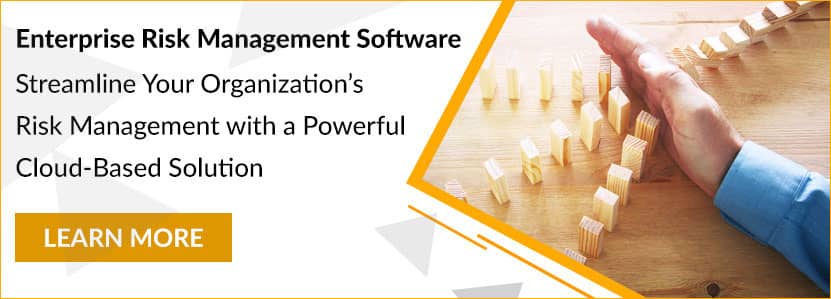Home/ Blog / How Risk and Compliance Technology Makes FIs More Secure
Data security is essential for all businesses, but its criticality is increased manifold in the financial sector. Financial Institutions (FIs) have access to private details of their clients to a level comparable only to the healthcare sector. A lapse in data security or a leak of confidential information can cause significant losses for both FIs and their clients. The losses are not limited to reputational damage, sensitive and confidential information, if leaked, can result in financial damage to the clients and the financial institutions involved. Risk and compliance technology can help FIs ensure the security of both their database and the risk and compliance platform.

Risk and compliance technology discussions mainly focus on the improvements that can be expected in risk and compliance processes throughout the organization. What is often overlooked is how these process improvements and other features within risk and compliance management platforms reinforce the security of risk and compliance data. The reinforcement of security is achieved through monitoring, process improvements, and intelligent data management.
Ensuring Security Through Compliance
Keeping financial data secure is not something a financial institution needs to do only because it is beneficial to clients. Regulations require FIs to ensure the safety of confidential financial data being stored in their databases. Many of the compliance-related rules FIs must follow explicitly to protect the consumer and internal data—compliance technology enhances information security throughout the enterprise by process improvements and streamlined workflows.
Intelligent Document Handling
Risk and compliance platforms ensure that the documents and spreadsheets being used within the FIs are transmitted securely, and that access to these files is limited only to the people that need access. There are two components to the improvements risk and compliance platforms enable – data storage and data transmission. Both work in tandem to enhance data security.
Data Storage
Risk and compliance platforms store documents in a secure system that only provides selective access and keeps extensive access records. Management can define what type of users can access the files and see who viewed or edited the file at different times. These features mean that businesses can quickly track down any mistakes on the documents by looking at the access records history within the risk and compliance system.
Data Transmission
Risk and compliance data needs to be shared with different people across the organization because risk and compliance can only be managed with the cooperation of the rest of the organization. The risk and compliance teams must often send out and receive documents and spreadsheets from other departments. Sending documents via e-mail creates significant security vulnerabilities in risk and compliance management. Once a file is emailed to someone, it is out of the financial institution’s control – the receiver can make a copy of the file and share it anywhere s/he wants.
FIs can ensure that their controls work optimally by monitoring their performance through control testing functionality within the risk and compliance platform. Share on XRisk and compliance platforms eliminate this vulnerability by providing a central repository for all risk and compliance documents. Instead of sending the confidential documents via email, the risk and compliance teams can share the link to the document in the repository, ensuring that the document remains in control of the organization.
Managing Security Risks
The risk monitoring and management side of risk and compliance platforms help businesses manage and mitigate as many risks as possible, including cyber risks. Modern risk management platforms use a combination of internal data and external market information to predict emerging risks. The ability to predict emerging risks is beneficial when it comes to cybersecurity. Whenever there is a heightened threat of a cybersecurity failure (which can happen if a new exploit is discovered in any networking technology), this risk will appear on the risk management platform.
FIs can also ensure that their controls work optimally by monitoring their performance through control testing functionality within the risk and compliance platform. Combining the ability to test controls quickly with risk predictions enables an enhanced level of security for businesses. Instead of simply testing controls, these can look at the emerging risks and ensure that the focus on controls will be the most critical to manage the expected emerging risks.
Security is not an added benefit of risk and compliance platforms; it is a fundamental factor driving the entire process of a modern risk and compliance platform. Any financial institution that wants to ensure that its data is protected and secure should look at the latest risk and compliance platforms.
Interested in seeing how your organization can enhance the security of its risk and compliance framework? Get in touch with our experts to see Predict360, the American Bankers Association endorsed solution, in action.
Request a Demo
Complete the form below and our business team will be in touch to schedule a product demo.
By clicking ‘SUBMIT’ you agree to our Privacy Policy.




